What is an AI chatbot solution? Understanding its role in modern business
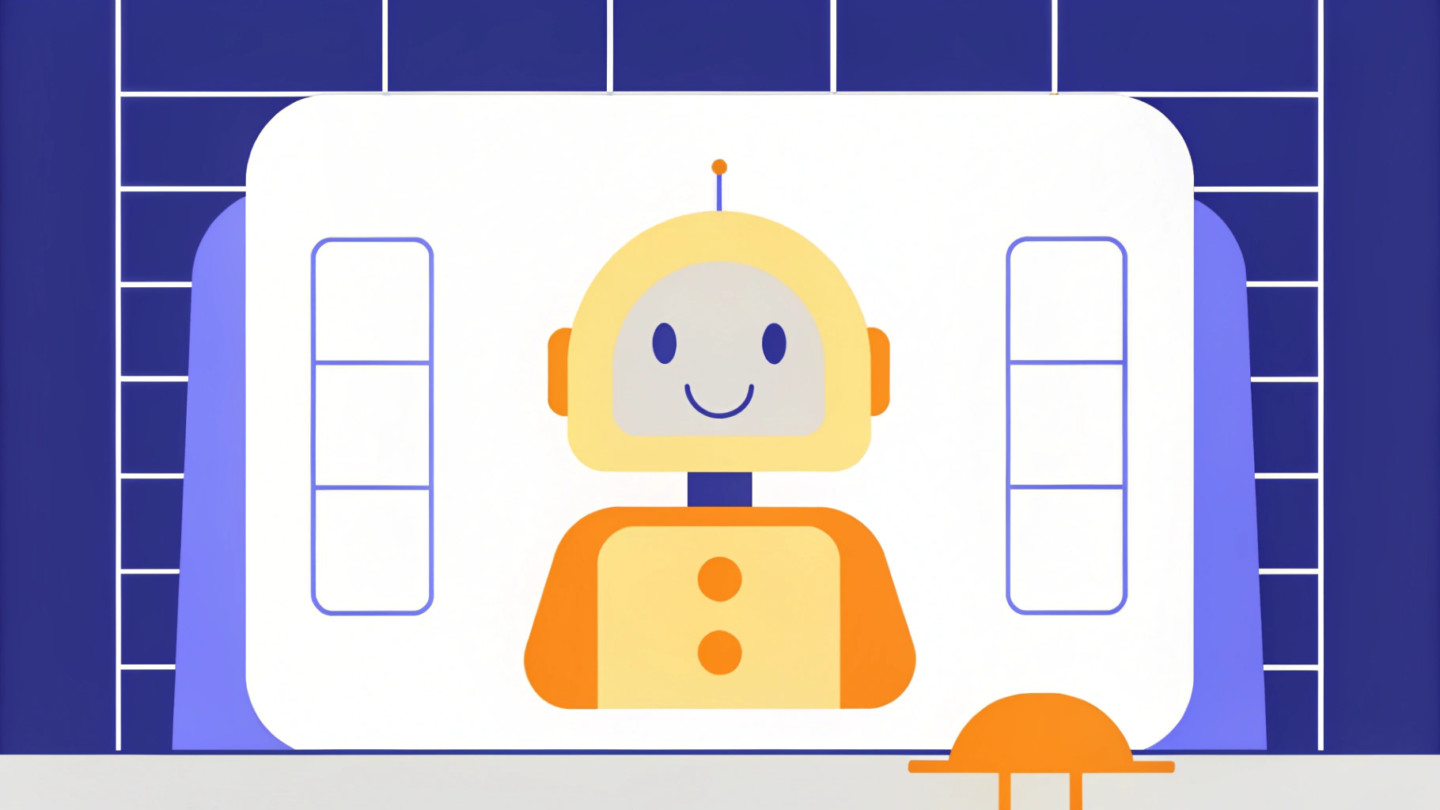
Overview:
AI chatbot solutions are advanced conversational agents that enhance customer engagement by providing 24/7 support and automating responses to inquiries, ultimately improving service efficiency and reducing costs for businesses. The article illustrates this by highlighting their ability to learn and adapt through machine learning, which leads to higher customer satisfaction and increased conversion rates, thereby making them essential tools in modern business strategies.
Introduction
In the rapidly evolving landscape of digital communication, AI chatbots have emerged as essential tools for businesses seeking to enhance customer interaction and streamline operations. These sophisticated applications utilize artificial intelligence to simulate human conversation, enabling them to respond to inquiries with remarkable accuracy and efficiency.
As organizations increasingly turn to chatbots to meet the demands of a tech-savvy consumer base, understanding their functionality, benefits, and potential challenges becomes crucial. This article delves into the various dimensions of AI chatbots—exploring their:
- Definitions
- Business advantages
- Types
- Implementation hurdles
- Future trends
Providing a comprehensive overview of how these technologies are reshaping customer engagement strategies in today’s competitive market.
Defining AI chatbots: What they are and how they work
AI conversational agents are more than just chatbots; they’re the frontline soldiers in the battle for customer engagement. These advanced software applications replicate human conversation using artificial intelligence. They leverage natural language processing (NLP) to understand what users are asking and respond with relevant information. Whether it’s on your website, a messaging app, or social media, these agents are everywhere, ready to assist.
What makes them so powerful is their ability to learn. Through machine learning algorithms, AI conversational agents improve their responses over time. They can handle everything from straightforward FAQs to intricate service issues. The real kicker? They provide 24/7 support, which not only boosts user satisfaction but also helps companies cut down on staffing costs.
Now, let’s look at some numbers. A study called “AI Demographics by Age” shows that:
- 30.8% of people aged 61 and older use virtual assistants like Siri and Alexa weekly.
- Over 80% of younger individuals have never interacted with a large language model.
This disparity is a goldmine for businesses looking to refine their client engagement strategies.
According to Juniper Research, global retail spending on conversational agents is set to skyrocket from $12 billion in 2023 to an astounding $72 billion by 2028. This isn’t just growth; it’s a clear signal that AI chatbot solutions are crucial for improving service efficiency and meeting the evolving expectations of consumers. If you’re not paying attention to this trend, you might just miss the wave that’s about to reshape customer service.
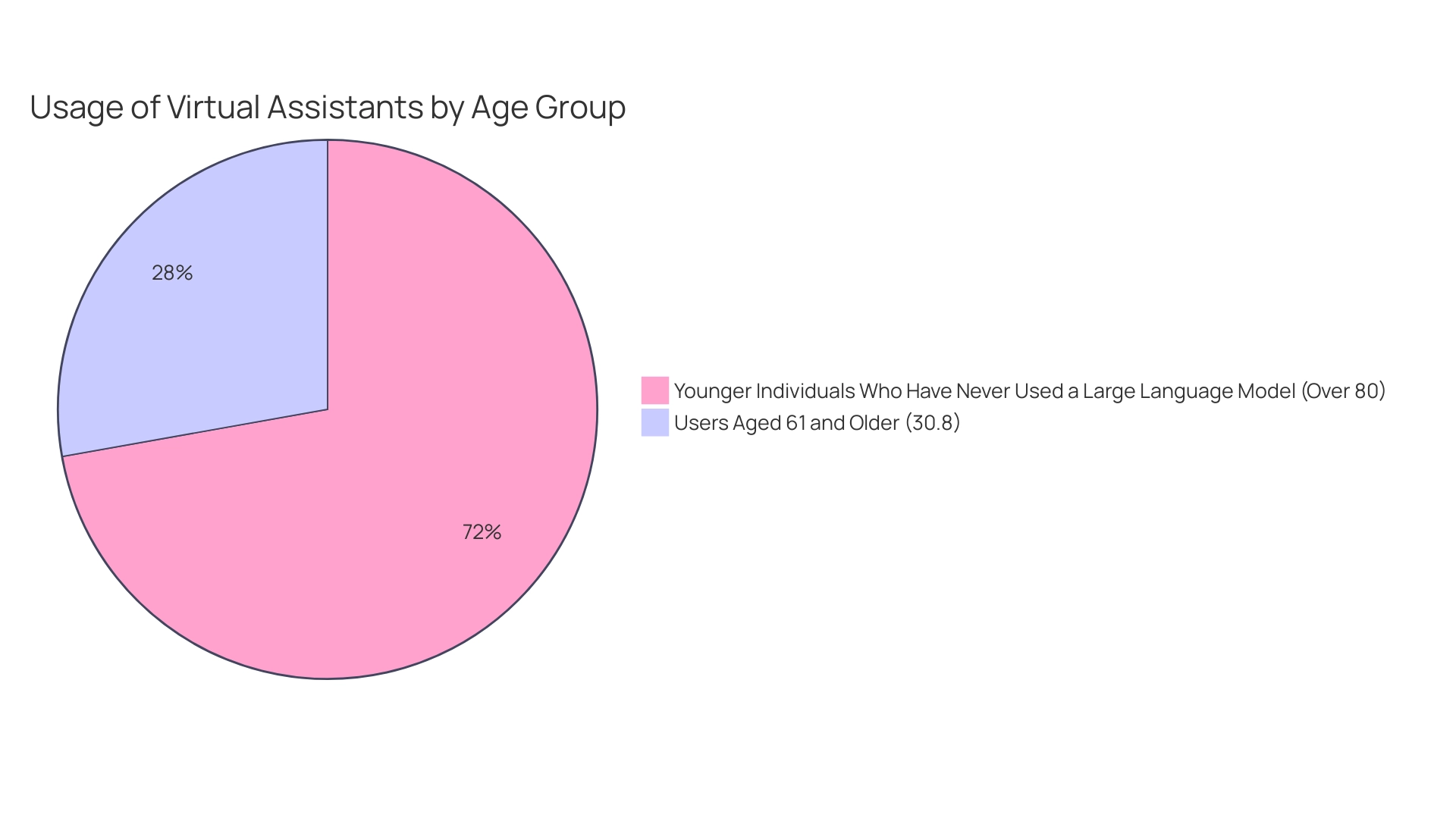
The business benefits of AI chatbot solutions
Adopting an AI chatbot isn’t just a tech upgrade; it’s a game-changer for businesses. Think of it like having a 24/7 customer service team that never sleeps. These chatbots deliver instant responses to customer inquiries, slashing wait times and boosting satisfaction. You can handle more interactions without the headache of hiring additional staff.
But it doesn’t stop there. Chatbots automate the mundane stuff — like answering frequently asked questions — cutting down on labor costs. Plus, they gather and analyze data on customer preferences and behaviors. This intel allows businesses to fine-tune their marketing strategies, leading to better engagement.
The numbers speak for themselves. A whopping 84% of leisure travelers using generative AI for trip planning reported satisfaction. That’s not just a trend; it’s a clear sign that AI tools are becoming mainstream. Moreover, 47% of companies believe AI will enhance their credibility. Yet, it’s crucial to recognize the skepticism out there. According to the ‘AI and Consumer Sentiment’ study, 38% of U.S. adults feel more concern than excitement about AI in their daily lives.
Despite the mixed feelings, 74% of executives see the benefits of AI as outweighing the risks. This is a strong endorsement for investing in advanced conversational agent technologies. But it’s not just about the tech; there’s a growing demand for ethical practices, user trust, and regulatory frameworks in AI development.
In the end, the advantages of AI chatbots translate into higher conversion rates and stronger customer loyalty. They’re not just a tool; they’re a strategic asset in today’s competitive landscape. As Zendesk points out, the success of AI in customer service hinges on the sophistication of the chatbot technology you choose. Invest wisely, and you’ll reap the rewards.
Types of AI chatbots: Understanding the variants
Let’s break down the landscape of AI conversational agents. You’ve got two main types: rule-based systems and AI-driven systems.
Rule-based systems are like the old-school vending machines. They only deliver what you’ve programmed them to respond to, sticking to predefined scripts. This works well for simple tasks — think FAQs or basic information. They’re efficient but limited.
Now, let’s talk about AI-driven systems. These are your smart assistants. They use machine learning and natural language processing (NLP) to understand context and intent. They’re not just regurgitating answers; they’re learning from every interaction. Over time, they get better at delivering accurate responses. It’s like having a conversation with someone who actually remembers what you talked about last time.
For businesses, knowing the difference between these systems is crucial. You need to pick the right chatbot solution that fits your engagement strategy. Take e-commerce and customer support, for instance. Companies using AI conversational agents have seen conversion rates soar to 70%. That’s not just a statistic; it’s a testament to how these technologies can drive real results. According to recent stats. 50% of clients like to talk with an AI chatbot solution. That’s a clear signal that people are warming up to these tools.
And it doesn’t stop there. About 30% of entrepreneurs are looking at AI to generate website copy. This shows the vast potential of AI in transforming customer interactions. As we head into 2024, it’s vital for companies to understand the market dynamics. AI-driven solutions are gaining traction, and businesses need to adapt their conversational agent strategies to stay competitive. The time to act is now.
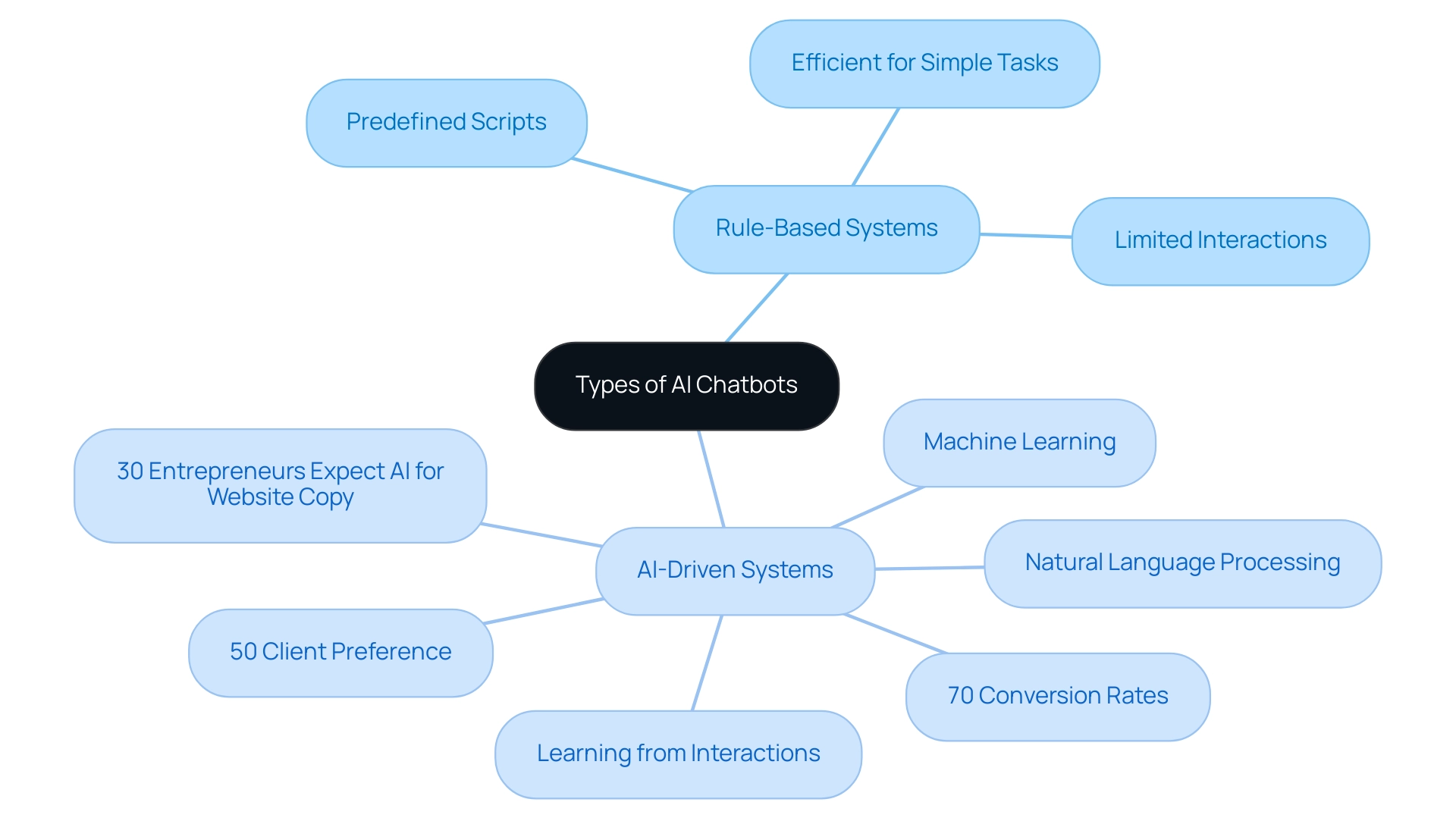
Challenges in implementing AI chatbot solutions
AI chatbots can be a game changer for businesses, but implementing them isn’t a walk in the park. The biggest challenge? Getting the system to truly understand and process natural language. Users don’t always say things in the same way, and that variability can throw a wrench in the works. Statistics show that 26% of all sales come from automated interactions. That’s a big deal. But it also highlights the need for top-notch natural language understanding if you want to tap into that potential.
Then there’s the cost. Setting up a chatbot is one thing, but maintaining it is another beast entirely. Companies often worry about whether these solutions are worth the investment, especially when there’s a risk of leaning too heavily on automation. Relying too much on bots can hurt your human interactions, which are crucial for tackling complex questions.
Now, here’s the upside. According to Drift, businesses using automated messaging systems see a 55% bump in high-quality leads. But that’s not the whole picture. You can’t ignore the need for human touch. Interestingly, 50% of customers actually prefer chatting with an AI chatbot. This shows how vital these tools are for boosting customer engagement. Take the case study ‘Lead Qualification Efficiency’ — it found that using an interactive quiz for lead qualification outperforms static forms by 20%. Why? Because it engages users in a conversation, making the process smoother and cutting down on drop-offs.
However, businesses can’t afford to be complacent. The risks tied to generative AI are real. Recent reports highlight that many organizations are concerned about inaccuracies and cybersecurity threats in their AI systems. Tackling these challenges isn’t just a checkbox exercise. It demands careful planning, ongoing training, and a smart strategy to integrate automation without sacrificing service quality. In the end, it’s about striking the right balance.
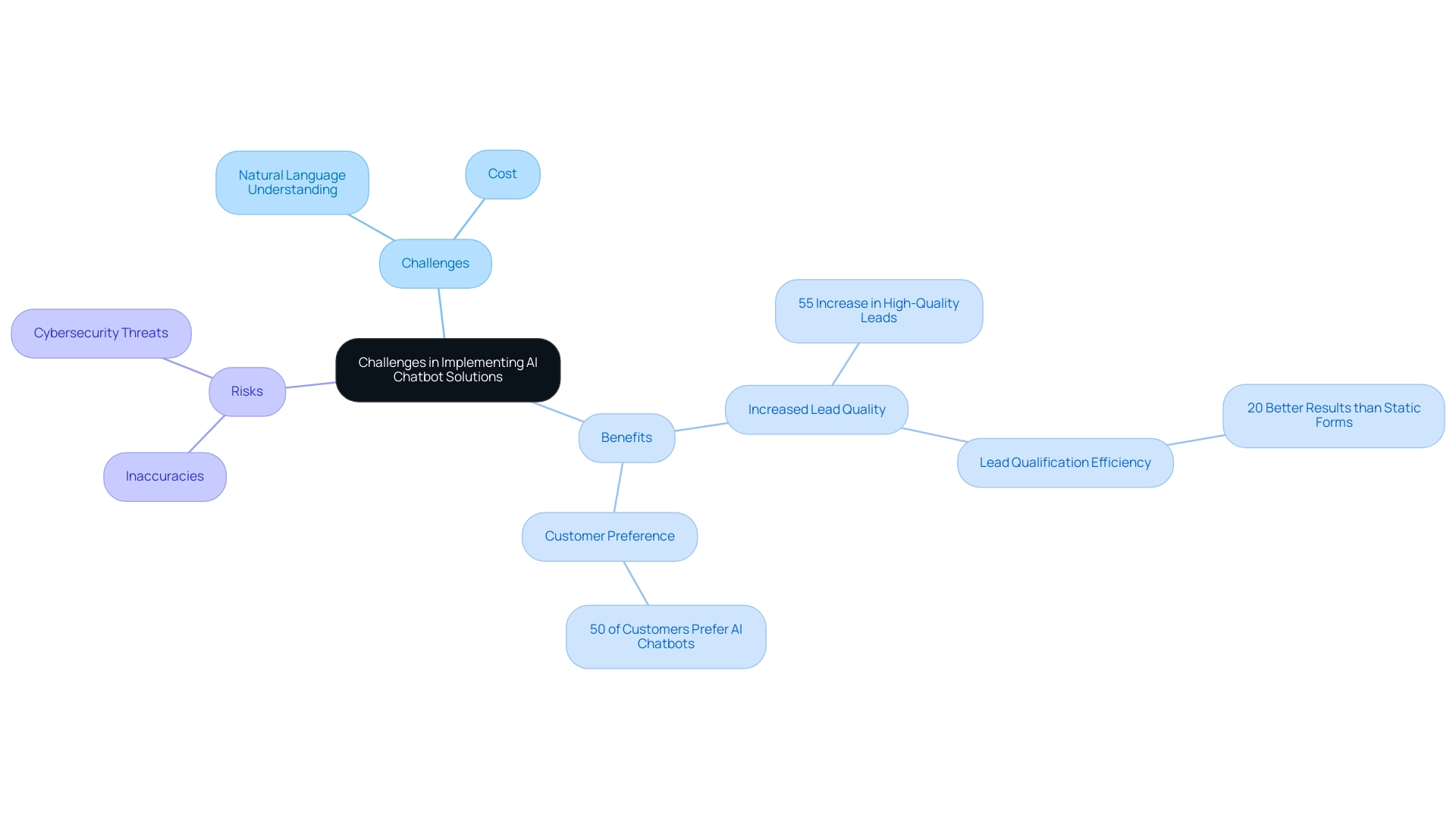
Future trends in AI chatbot technology
The future of AI chatbots is not just bright; it’s a game-changer for customer engagement, especially in sales. We’re talking about a shift that’s going to redefine how businesses connect with their clients. One major trend is the seamless integration of AI conversational agents with cutting-edge technologies like voice recognition and augmented reality. This isn’t just about adding bells and whistles; it’s about delivering a user experience that feels intuitive and engaging.
As machine learning algorithms evolve, these chatbots will become more adept at understanding context and emotions. This means more personalized interactions. Picture this: a customer reaching out, and the chatbot knows exactly what they need, right off the bat. That’s the future we’re heading toward. Companies are also leaning into hybrid models, where AI assistants work alongside human representatives. This combination ensures that clients get the best of both worlds — efficiency and the human touch.
Take Dashly as a prime example. They’ve automated 90% of the appointment booking process, improved lead categorization, and achieved an impressive 50-60% email open rate — far above the market average. Before Dashly came along, clients were bogged down with long response times and low-quality leads. That’s like trying to run a race with a backpack full of bricks. Dashly steps in and provides a self-serve funnel for non-MQL leads, automating 60-70% of interactions and organizing 70-90% of meetings with MQL leads. This is more than just efficiency; it’s a transformation in how businesses operate.
Current data shows that 59% of consumers expect automated assistants to respond in five seconds or less. That’s the bar we’re measuring against. Tidio points out that in some sectors, automated messaging can achieve conversion rates of up to 70%. That’s not just a number; it’s a testament to the power of these systems in driving customer engagement. A case study on lead generation revealed that 55% of companies saw an uptick in high-quality leads thanks to chatbots. They’re not just a nice-to-have; they’re essential.
Let’s face it: 53% of people find waiting too long for a response to be the most frustrating part of dealing with businesses. That’s a clear signal that the time to adopt efficient AI chatbot solutions is now. Dashly doesn’t just stop at improving interactions; it predicts client outcomes with 99% accuracy for meeting totals and 98.3% for revenue forecasts. This level of precision can significantly boost sales metrics.
In the end, embracing AI chatbot solutions isn’t just about keeping up; it’s about getting ahead. The businesses that harness these advancements will not only enhance client interactions but also optimize their sales processes for the future.
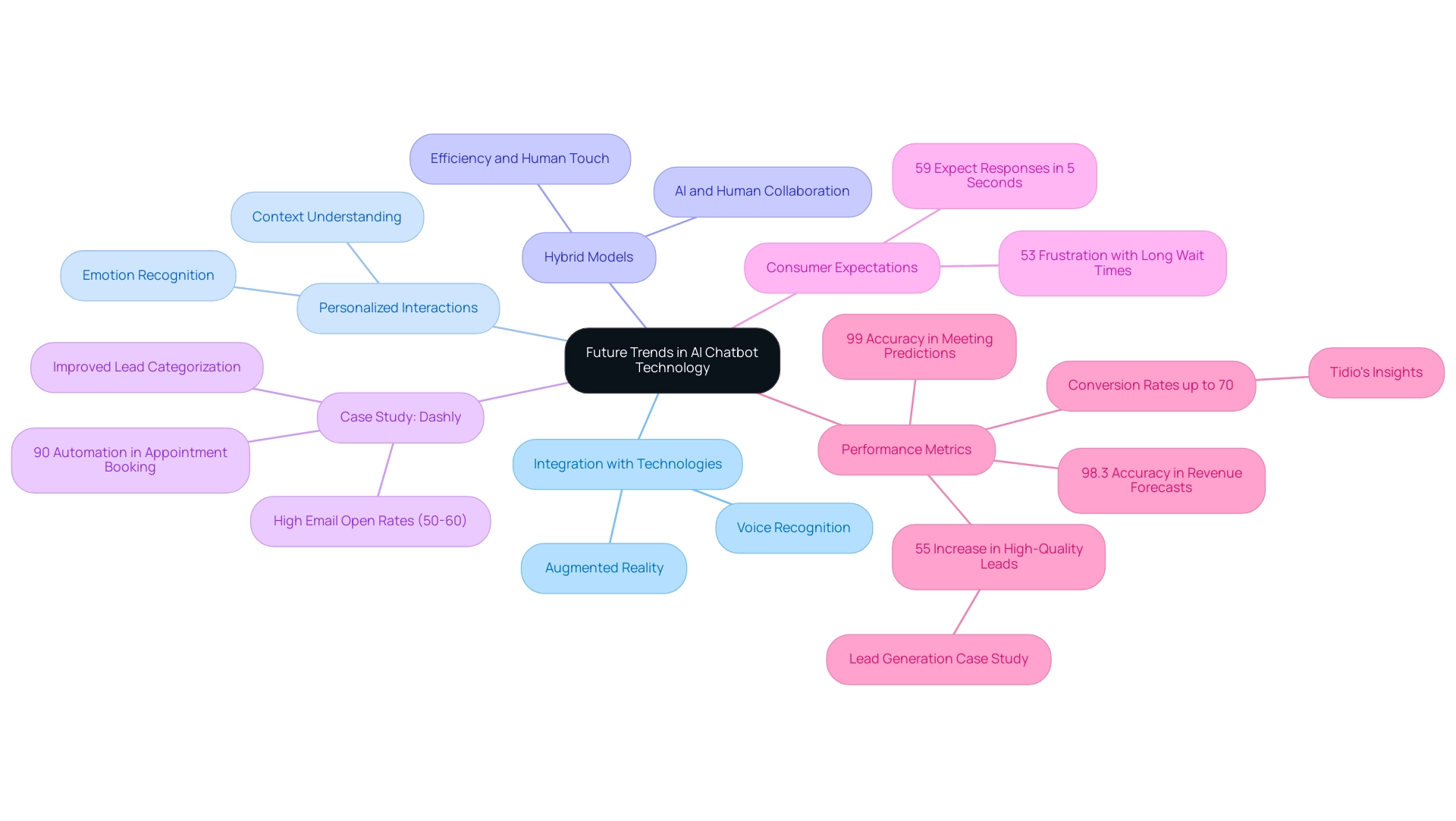
Conclusion
AI chatbots are undeniably reshaping the landscape of customer engagement and operational efficiency in the modern business environment. By leveraging advanced technologies such as natural language processing and machine learning, these tools provide real-time support, significantly reducing response times and enhancing customer satisfaction. The diverse types of chatbots, from rule-based to AI-driven solutions, cater to various business needs and customer interactions, showcasing the flexibility and adaptability of these technologies.
Despite the clear advantages, organizations must also navigate implementation challenges, including the need for accurate natural language understanding and the balance between automation and human interaction. As businesses invest in these technologies, they must prioritize ethical practices and user trust to ensure long-term success.
Looking ahead, the future of AI chatbots is poised for rapid evolution, with trends indicating deeper integrations with emerging technologies and hybrid models that combine AI with human expertise. This progression promises to deliver even more personalized and efficient customer experiences, underscoring the strategic importance of chatbots in driving engagement and sales. As the demand for quick and effective communication continues to rise, embracing AI chatbot solutions will be critical for businesses aiming to thrive in a competitive marketplace.








![10-step Guide on How to Create a Chatbot for your Website [Build without code]](https://www.dashly.io/blog/wp-content/uploads/2022/06/How-to-create-a-chatbot-to-automate-conversations-with-your-website-visitors-720x317.png)